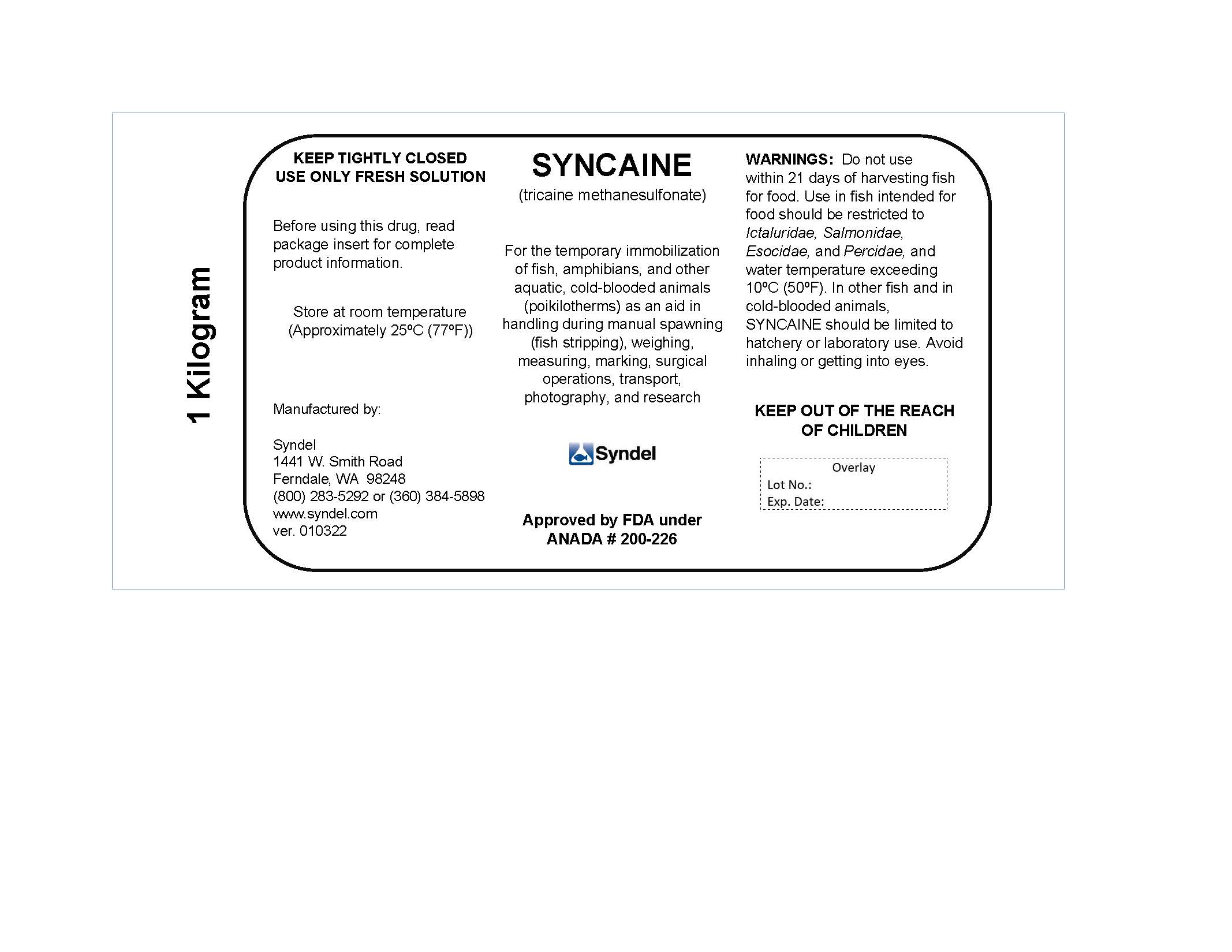Animal NDC 50378-011-10 Syncaine
Tricaine
Animal Product Information
Syncaine Images
Syncaine Animal Product Labeling Information
The product labeling information includes all published material associated to a drug. Product labeling documents include information like generic names, active ingredients, ingredient strength dosage, routes of administration, appearance, usage, warnings, inactive ingredients, etc.
Table of Contents
Warnings
WARNINGS
Do not use within 21 days of harvesting fish for food. Use in fish intended for food should be restricted to Ictaluridae, Salmonidae, Esocidae, and Percidae, and water temperature exceeding 10°C (50°F). In other fish and in cold-blooded animals, SYNCAINE should be limited to hatchery or laboratory use. Avoid inhaling or getting into eyes.
Toxicology
Comparative toxicologic studies carried out on fish and frogs gave the following results:
FISH TOXCITY STUDIES - The toxicity of SYNCAINE was measured by standard methods in laboratory bioassays with rainbow trout, brown trout, brook trout, lake trout, northern pike, channel catfish, bluegill, largemoth bass and walleye. The 24, 48 and 96 hour LC50 (lethal concentration for 50 percent of the animals) values for trout ranged from 52 to 31 mg/liter; for northern pike, from 56 to 48 mg/liter; for catfish, from 66 to 50 mg/liter; for bluegill and largemouth bass, from 61 to 39 mg/liter; and for walleye, the values were 49 to 46 mg/liter.
Safety Index:The safety indices for SYNCAINE refer to the margin between concentrations which cause anesthesia and mortality. They are expressed by the quotient of the lethal concentration for 50 percent of the fish (LC50) and the effective concentration for 50 percent of the fish (EC50)
Safety Indices for Rainbow Trout and Channel Catfish at 12°C (54°F)
| Species | Exposure (min.) | LC50 (mg/liter) | EC50 (mg/liter) | Index |
| Rainbow Trout1 " " Channel Catfish2 " " | 15 30 60 15 30 60 | 65 57 56 139 118 110 | 32 32 29 47 45 46 | 2.0 1.8 1.9 3.0 2.6 2.4 |
FROG TOXICITY STUDIES3 - Frogs were put into various concentrations of SYNCAINE for 30 minutes and then transferred to tap water in order to determine LC50. The LC50 was 6.2 percent SYNCAINE. Therefore, the anesthetic must be used in very high concentration before it is fatal to frogs.
* The information on this page is for an ANIMAL PRODUCT, please review the complete disclaimer below.
